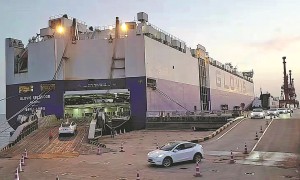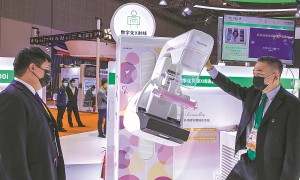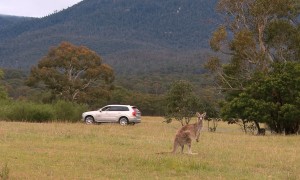drive, fly, pilot, ride, steer
这五个词都可表示“驾驶”。它们的区别是:
开汽车时用drive; 驾驶轮船用pilot; 骑自行车用ride; 如果表示操纵汽车、轮船或自行车的方向,就用steer; 但谈及飞机时, fly和pilot这两个既可表示“驾驶”又表示操纵飞机的方向。例如:
He was driving car along the road.他沿着马路行驶。
Can you ride a bicycle?你会骑自行车吗?
He was the first man ever to fly that type of aircraft.他是驾驶那种飞机的第一人。
She steered with one hand while trying to adjust the rear-view mirror with the other.她用一只手操纵方向盘,而用另一只手调整后视镜。
He piloted a ship through the canal.他引领着船只通过运河。
drive, cause
drive和cause都可译作“迫使”“使得”。它们的区别在于其用法不同:cause只能以动词不定式作宾语补足语,而drive除可用动词不定式作宾语补足语外,还可接形容词或介词短语作宾语补足语。例如:
His illness caused him to miss the game.
他的病使他错过了比赛。
The noise outside the building nearly drove me mad.
楼外的噪音几乎使我发疯。
You must drive your advice into his head again.
你必须把你的忠告再一次灌输给他。
drive in, ride in
drive in和ride in都表示“乘车”。它们的区别是:
drive in后面跟的“车”通常是完全或部分地由自己管理的车或自己开的车,而ride in后面跟的“车”则通常指并不属于自己管理,也不是自己开的车。例如:
They drove back in a grey car.
他们开着一辆灰色轿车回去了。
They were riding in a bus when this hap- pened.
出事时,他们正坐在一辆公共汽车里。
drive, actuate, move, prompt
这组词均有促使某人按某种方式行动的意思。它们的区别是:
move为一般用语,不强调动因是外部力量还是个人的动机; actuate为正式用语,动因来自一种强大的内在力量,如强烈的感情、欲望或信念; drive指持续不断地向前推进,或指受内力或外力的驱使; prompt多用于动因不太重要的场合。例如:
He is actuated not by kindness but by ambition.他并非出于好心,而是出于个人野心。
They drove to the station.他们开车到车站去。
The sight of the ships prompted thoughts of his distant home.看到船他便想起遥远的故乡。
drive, walk
这两个词都可表示“路程”。它们的区别是:
drive指“乘车所需时间”的路程; walk则指“步行所需时间”的路程。例如:
The hotel is 10-minute walk from here.
饭店离这儿有步行10分钟的路程。
The hotel is a half-hour drive from the centre of the city.
从饭店驱车到市中心有半小时的路程。
drive,ride
这两个动词都含有“乘、骑”之意。
drive指乘坐在有轮子的交通工具之内,控制其行驶。
ride通常指骑在车、马上行驶。
motivate,drive,prompt
这些动词都含“促使、驱使”之意。
motivate强调驱使人们采取行动的原因或动机。
drive侧重外来的驱策力和内心的感情力量的驱使。
prompt与motivate近义,强调起因。










